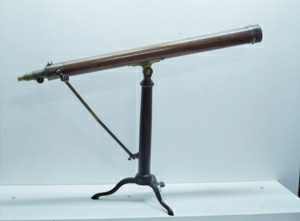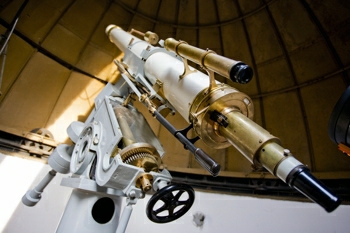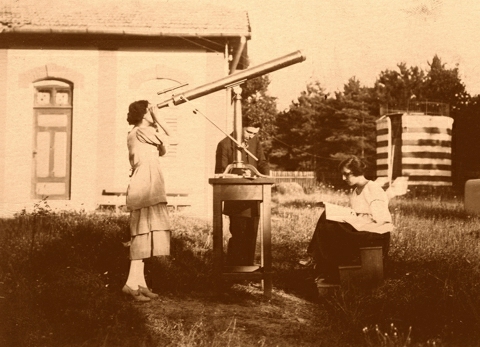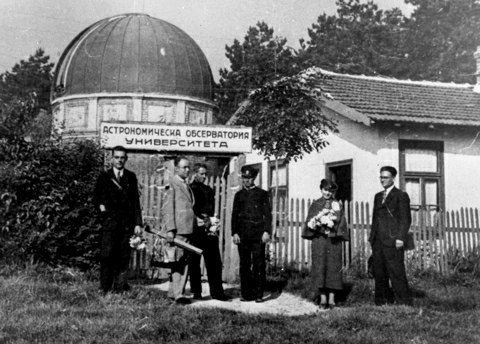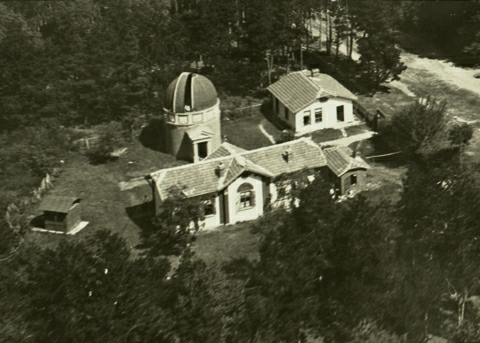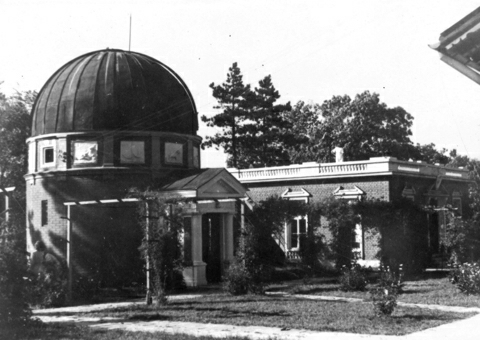 |
|
The Astronomical Observatory at the University of Sofia "St. Kliment Ohridski" marks the beginning of the regenerating culture, science and education in Bulgaria after the Liberation. The Observatory is a significant achievement for the University and for the Bulgarian science in the beginning of the 20th century. |
|
A picture of the Observatory, made on 26.XI.1899 by the first assistant professor in Astronomy Iordan Kovachev |
The building of the Astronomical Observatory was initiated by prof. Bachevarov, the first professor in Astronomy at the University, and started in 1892. The Observatory site was chosen to be outside of Sofia at that time, but at present it is adjacent to the swimming pool "Maria Luisa". At that time, the present Boris' Garden was a pasture of the Slatina village, reaching as far as Eagle bridge. The old building and the big dome of the Observatory were finished in 1894. This was 30 years before the construction of the University's main building. The first observational instrument in the newly built Observatory was the ocular tube of the famous Bulgarian scientist, Dr. Peter Beron. In 1886 Peter Beron's nephew, Stefan Beron, gave the tube to the Bulgarian Literary Society, which in turn gave the tube to the University in 1892. The ocular tube is produced by "Merz" in Munich in the second half of 19th century. The magnification of the tube is 500 times. This tube was the first instrument used for practical education of the students in Astronomy. Today the tube and other old astronomical instruments are exposed in the National Polytechnic Museum in Sofia. |
|
A few years later prof. Bachevarov supplied a lot of astronomical instruments, the most important of which was 6'' (15.2 cm) telescope with equatorial mounting produced by "Grubb". This is the first telescope in permanent mounting in Bulgaria. Since 1897 the telescope is used for educational purposes in Astronomy. The telescope was restored in 2004 and can be used at present. The Astronomical Observatory at the University is one of the first observatories on the Balkans. The Observatory was used mostly for educational purposes during the first years of its existence. Science observations were carried out very rarely. In 1910 prof. Bachevarov carried out observations on the Halley's comet, and his student A. Kunchev calculated the ephemerids of the comet. At that time, the young assistant professor Kiril Popov published his observations of the Halley's comet in Comptes Rendus of the French Academy. Prof. Bachevarov's observations and calculations of the conditions for solar and lunar eclipse are still reserved, as well as the calculations of stellar occultations by the Moon. |
The ocular tube of Dr. Peter Beron |
|
15 cm refractor used in the Observatory since 1897 |
The next head of the Department, Acad. Nikola Bonev (between 1928 and 1965), modernized the Observatory. The courtyard was enlarged, a new building with lectures rooms was built as well as a new observations' terrace and a new smaller dome. In 1942 the Observatory became a Service for precise time and performed this function up to 1986. In the dawn of first artificial satellites' launching, the Observatory took an important part in their observation. Today, the Observatory owns a modern instrumentation - optical and radio telescope, CCD-camera, spectrograph, etc., which is used in - the undergraduate and graduate educational programs in Astronomy. |
|
Practical exercises in the Observatory (1921) |
The Observatory in 1931 |
|
The Observatory from air (1934) |
The Observatory in 1945 |
|
Department of Astronomy, Faculty of Physics, 5 "James Bourchier" Blvd., 1164 Sofia, Bulgaria |

